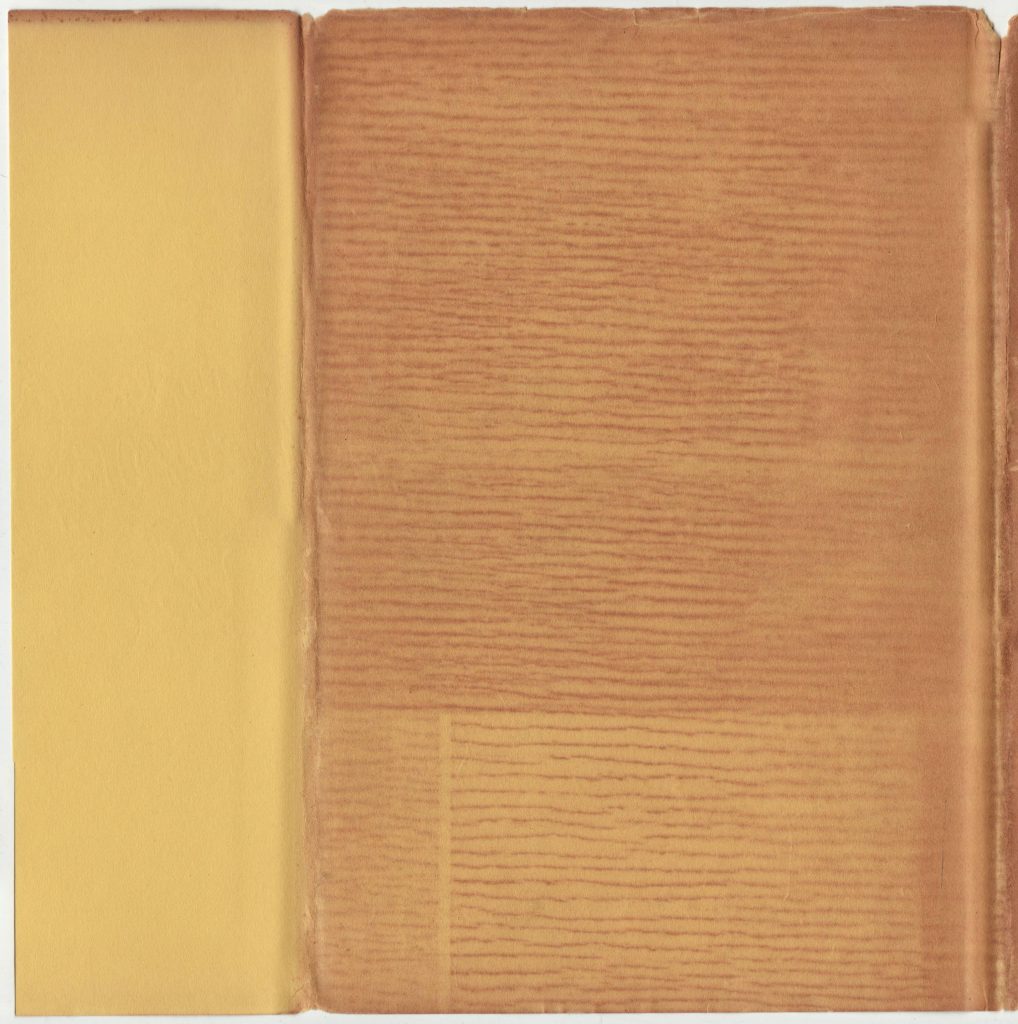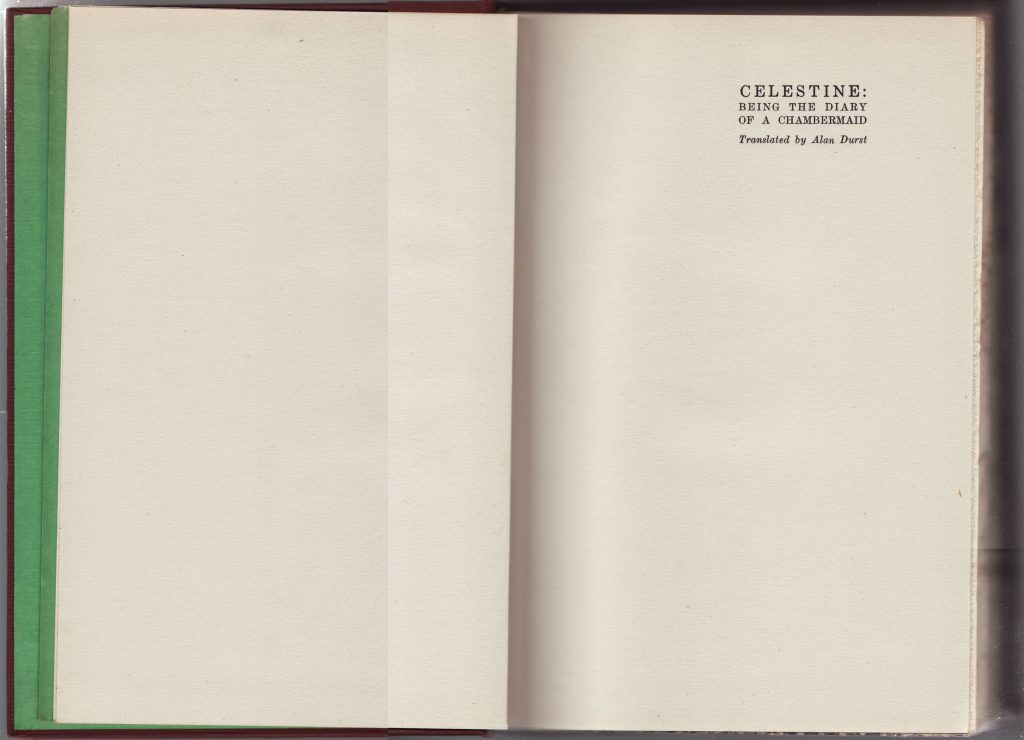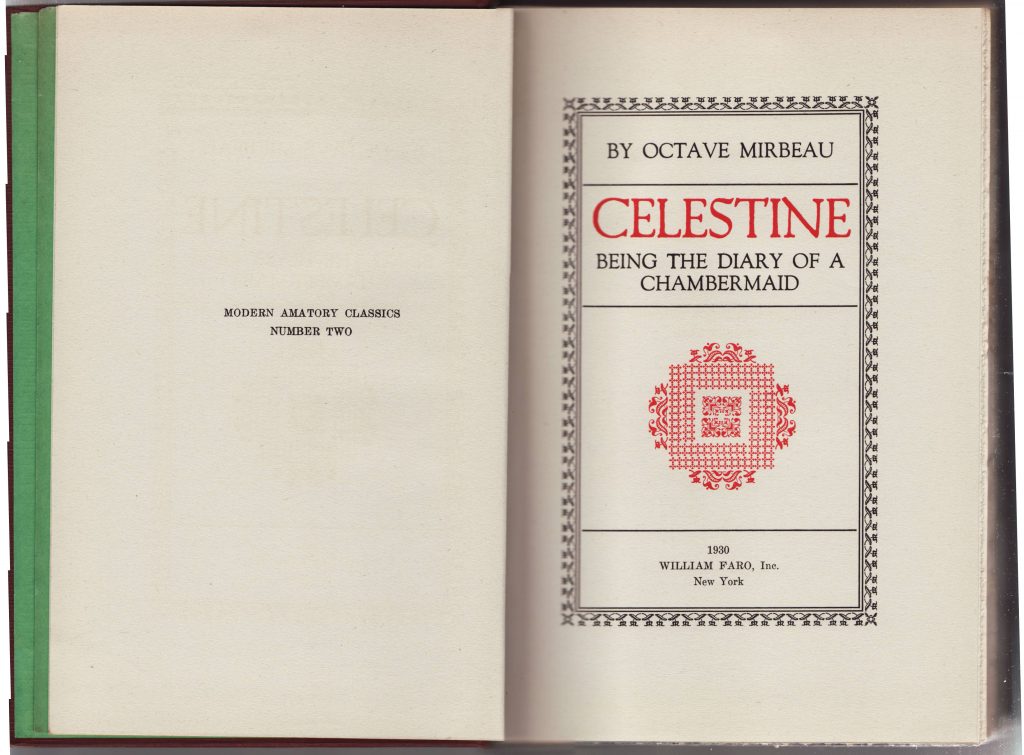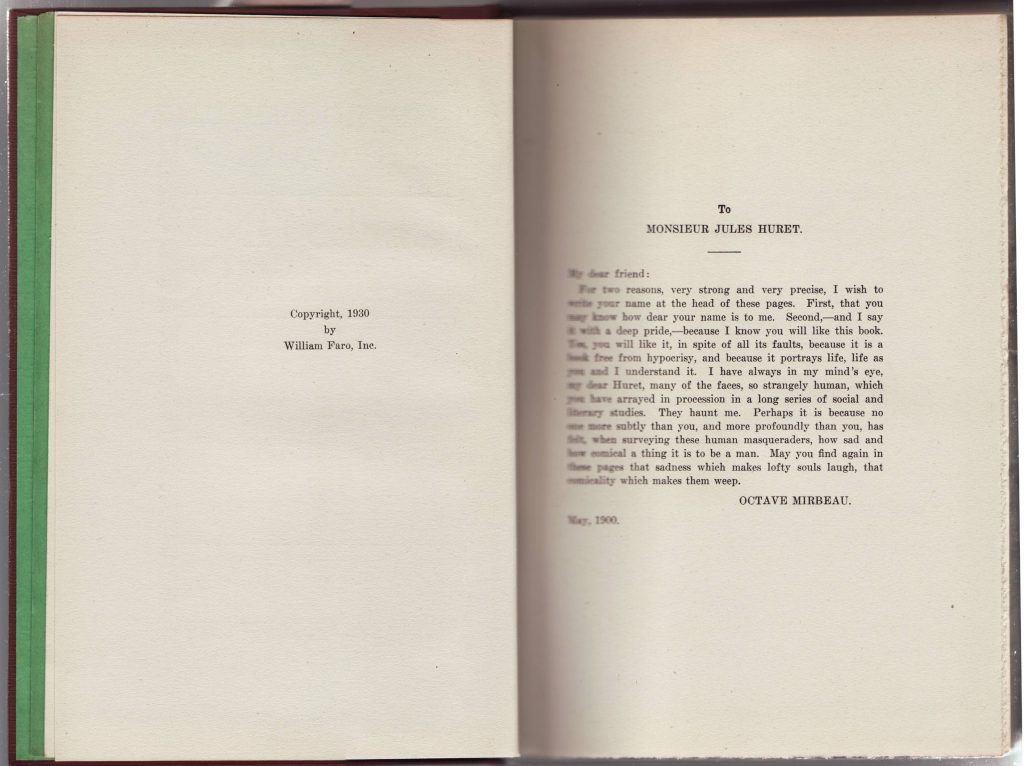William Faro, Inc. (New York)
Series dates: 1930-1934
Size: 6.5″ x 9.5″
William Faro, Inc. was the first trade book imprint of infamous publisher Samuel Roth. The company was established in 1930 and issued books through 1934, the firm having gone bankrupt in 1933.
Roth issued two reprint series as part of the Faro imprint: the Ardent Classics and Modern Amatory Classics. Both series were an attempt to exploit a niche in the reprint series market for erotically themed titles. Both series came about as Roth was trying to succeed as a legitimate publisher after years of trouble with anti-obscenity crusaders. The two series were attempts to cover two important areas of the reprint market: The Ardent Classics were relatively inexpensive (probably just over $1), smaller in size, well designed: akin to the Modern Library, the kind of classic literary reprint series most publishers had by the time. The Modern Amatory Classics were more expensive ($3.00), larger in size, also well designed: akin to the various premium and illustrated classics proffered by Illustrated Editions, George Macy’s series, Knopf’s Blue Jade Library, or Boni & Liveright’s Black & Gold Library.
The Ardent Classics reached only five titles, the Modern Amatory Classics only three, before Faro Inc. went bankrupt in 1933. After the bankruptcy of Faro, Inc., Roth persisted, and despite more arrests and prison time, revived his publishing efforts (both legitimate and under-the-counter titles), including the Library of Unusual Books series in the 1950s.
Details about Roth’s crazy life are amply detailed in two books by Jay Gertzman: Bootleggers and Smuthounds (1999), and Samuel Roth: Infamous Modernist (2013).
More information on Samuel Roth and William Faro, Inc. can be found in the entry for the Ardent Classics.
The Modern Amatory Classics reached only three titles, published in 1930 and 1931:
#1. D.H. Lawrence, Lady Chatterley’s Lover (1930)
#2. Octave Mirabeau, Celestine: Being the Diary of a Chambermaid (1930)
#3. Daniel Quilter, Body: A New Study, in Narrative, of the Anatomy of Society (1931) [Catalog of Copyright Entries. New Series: 1931, Part 1, lists the copyright holder of this title as “Autographed Editions Club” under which the title was also published in 1931; no subsequent publications under this imprint]
Roth was, with William Faro, Inc., attempting to capture the market for soft erotica and sexually themed literature, without getting himself arrested. The first title in the Modern Amatory Classics was an edited and expurgated version of Lawrence’s banned Lady Chatterley’s Lover. This particular version of Lady Chatterley had been creatively edited to preserve some titillation while skirting obscenity laws. The book was in essence pirated, based on a bowdlerized edition disavowed by Lawrence (who had recently died). After trying and failing to get permission from Lawrence’s widow, Roth went ahead and published the book. He allegedly kept track of profits from the book, with a plan to forward relevant payments once his edition was approved (he hoped) by Lawrence’s estate. Roth saw himself as doing what needed to be done to get works like Lady Chatterley’s Lover – literary masterpieces nevertheless banned in the U.S. – in the hands of the American public.
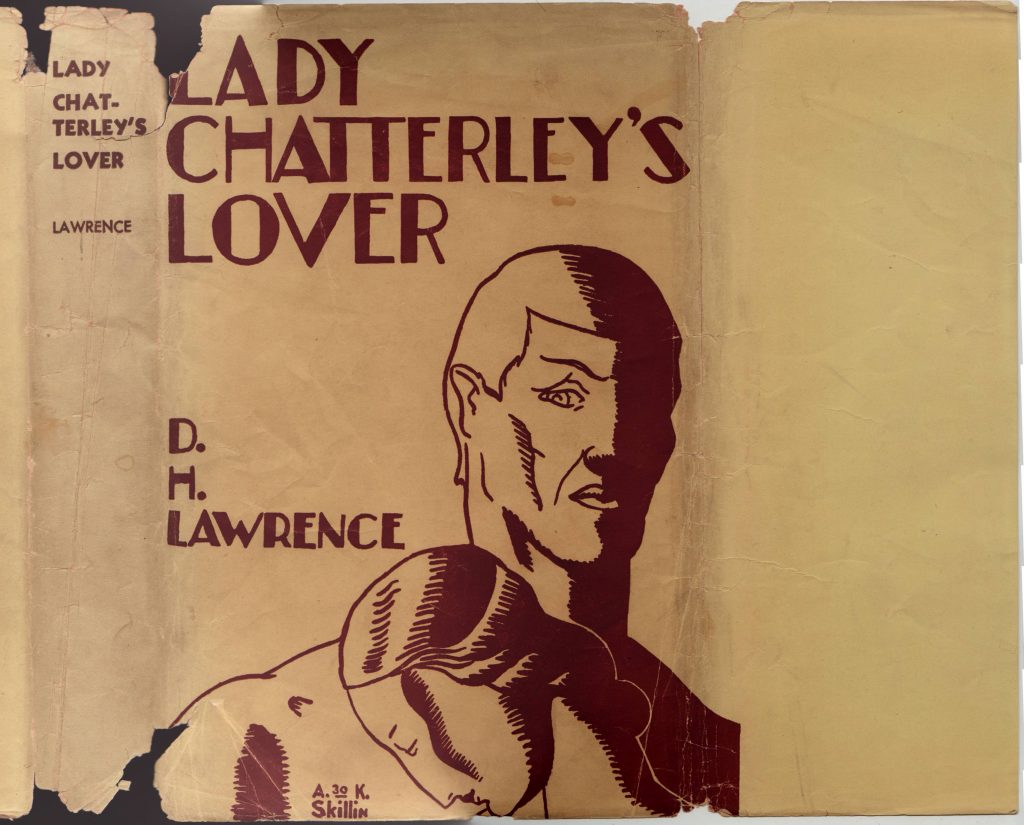
Roth’s pirated expurgated Lady Chatterley’s Lover (and at least three other titles) were pirated by two publishers in 1933 (and sold for the next decade). Royal Publishers and Nesor Publications (the jacket shown above) were both involved in the binding and remainder market in New York. The books have reset type but of the same text as the Faro publications. 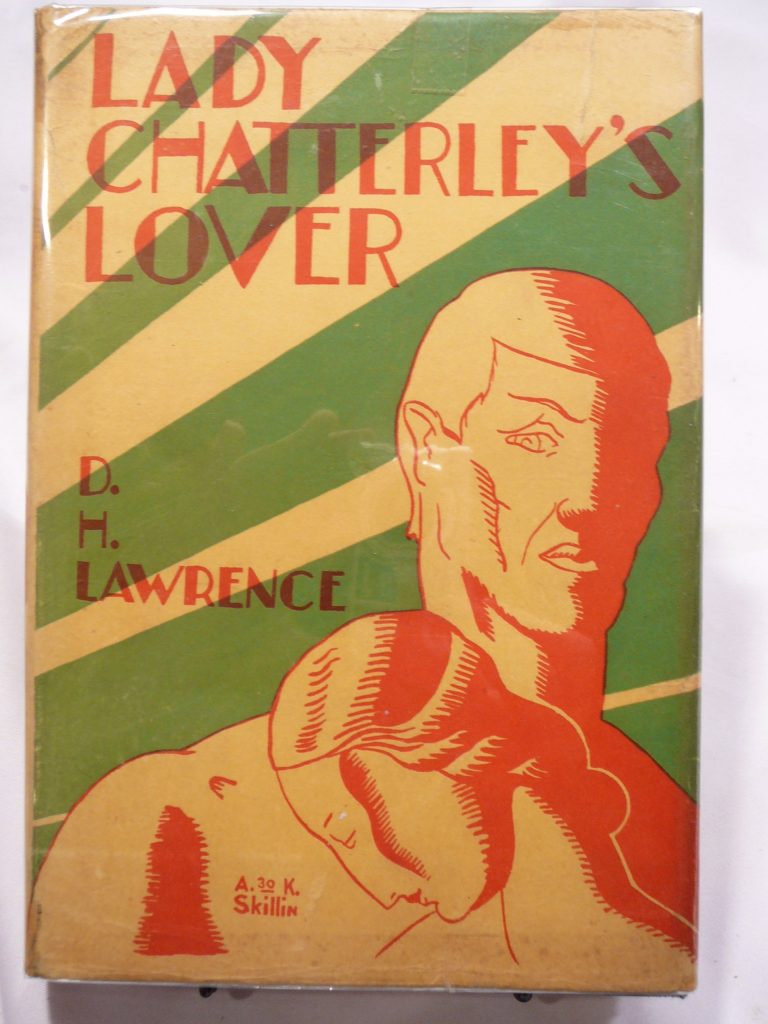 They do reproduce the jackets (by Anton K. Skillin) in a slightly modified form (image to left: the foreground graphics are red, rather than brown, and there are green bars in the background; other variations exist). Royal Publishers may be the same publisher that evolved to issue comics in the 1950s and religious works in the 1960s. Nesor Publications seems to have become Crown Publishers, now a subsidiary of Random House. Thus Crown, a substantial modern publisher, was founded on publishing pirated editions of pirated editions of banned erotic 20th-century literary works.
They do reproduce the jackets (by Anton K. Skillin) in a slightly modified form (image to left: the foreground graphics are red, rather than brown, and there are green bars in the background; other variations exist). Royal Publishers may be the same publisher that evolved to issue comics in the 1950s and religious works in the 1960s. Nesor Publications seems to have become Crown Publishers, now a subsidiary of Random House. Thus Crown, a substantial modern publisher, was founded on publishing pirated editions of pirated editions of banned erotic 20th-century literary works.
Modern Amatory Classics #2 was Octave Mirabeau’s Celestine: Being the Diary of a Chambermaid published by Faro in 1930 (originally published in serialized form 1891-92, and as a single title in 1900). The book was a critique of upper-class society and was also an experimental novel, playing with the form of the realistic novel (“its fractured exposition, its temporal dislocations, its clashing styles, and varying forms” [source]).
Jackets in the Modern Amatory Classics are unique to each title. In this case, a smattering of shoes, undergarments, and other saucy elements from the novel are splayed across the front of the jacket cover, with the proclamation that this is “The Frenchiest of French Novels.” The jacket design is by Anton K. Skillin (who also designed the Lady Chatterley cover). The front jacket flap includes the price ($3.00) and a brief summary of the novel. A form at the bottom of the front jacket flap allows one to request information on “Faro’s Limited Editions” – “announcements of books in limited and private editions.” Faro continued to issue prohibited titles and collect the addresses of those who wanted to purchase such titles throughout the 1930s and well into the 1950s. The series name is not included on the jacket.
The back of the jacket and rear flap are completely blank.
Bindings are substantive cloth, in maroon, with Faro’s characteristic glued on paper label on the spine:
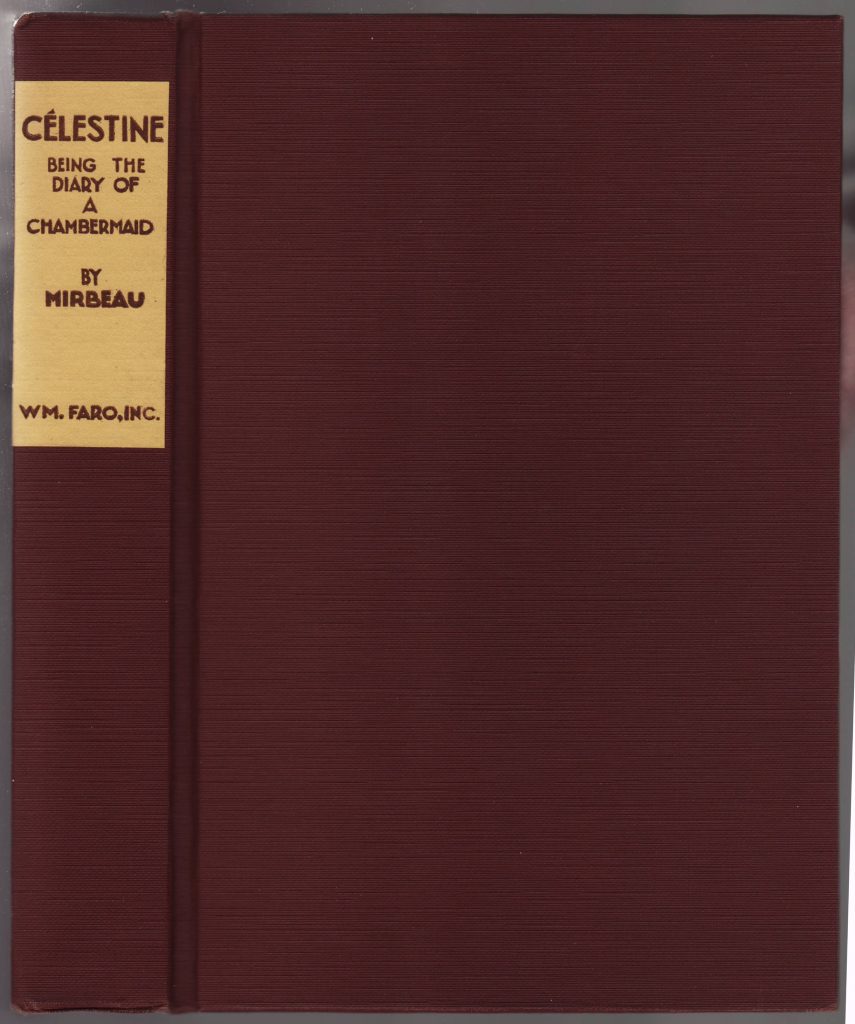
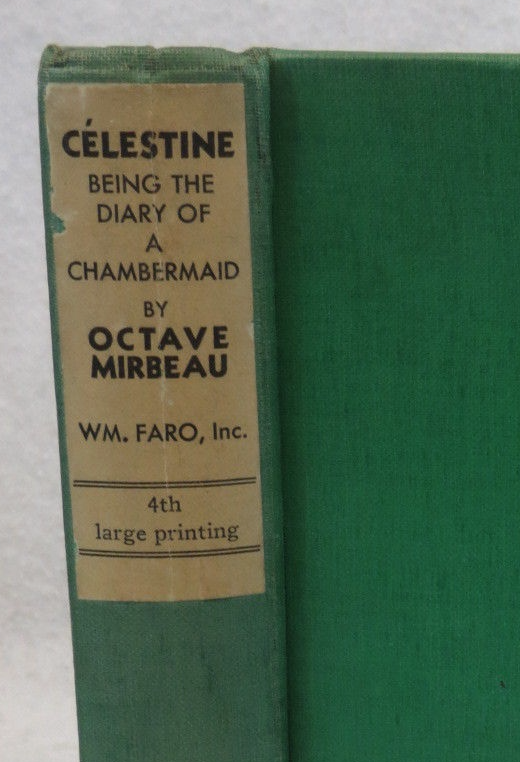
At least four printings of Celestine exist and the printing was indicated on the paper label on the book spine (and possibly the dust jacket). The image to the left (not in my collection) illustrates the printing information on the spine label. It seems that the books in the Modern Amatory Classics series were selling, but apparently not enough to stave off bankruptcy.
Following somewhat unusual vivid green craft paper endpapers, the half-title page includes the novel name as well as the name of the translator, Alan Durst.
The series name is included in only one place in the book (and not on the jacket at all), on the page facing the title page. The title page is in two colors, with a 1930 date above the Faro imprint.
The copyright is to Faro, and the date is again included.


